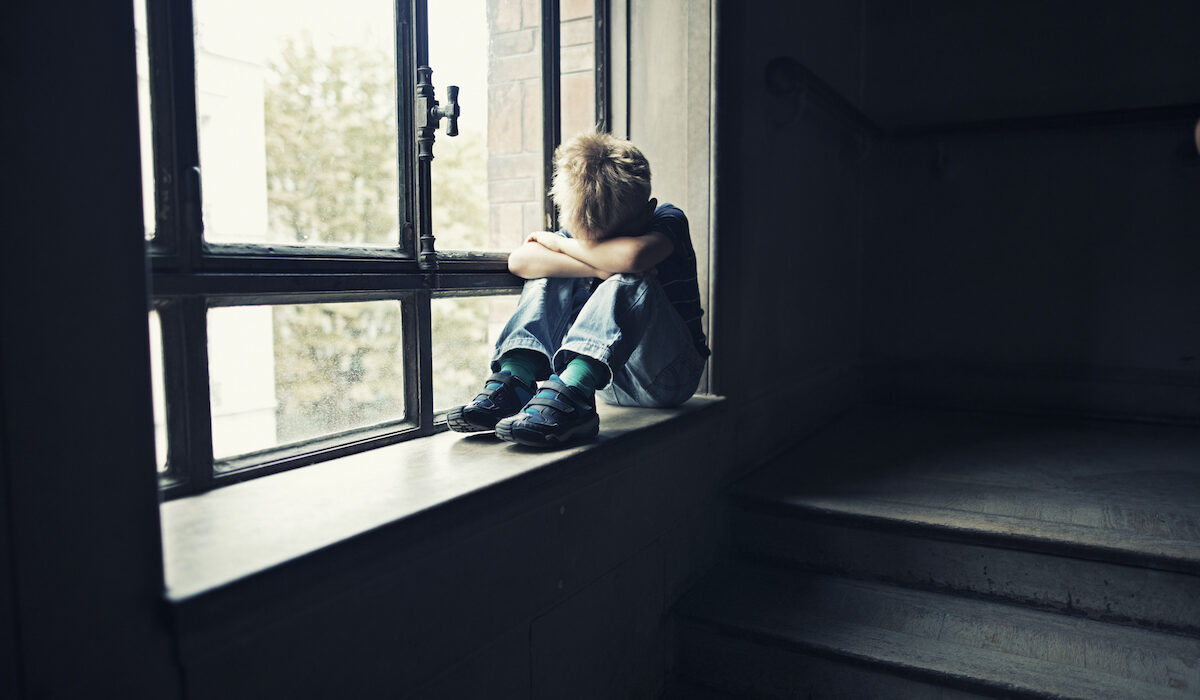Preschoolers with clinical depression are more likely than their peers to have attempted suicide or to have had thoughts of killing themselves by age 12, according to a new study from researchers at Washington University in St. Louis.
The findings, published recently in the Journal of the American Academy of Child & Adolescent Psychiatry, suggest that preschoolers — children ages 3 to 6 — with depression would benefit from initial and ongoing mental health screenings and behavioral interventions.
The study builds on two decades of research led by Joan L. Luby, MD, the university’s Samuel and Mae S. Ludwig Professor of Child Psychiatry. Her work has established that children as young as age 3 experience clinical depression.
“It is not a transient phenomenon but a very real condition that needs to be identified and addressed as early as possible,” said Luby, the study’s senior co-author and the director of Washington University School of Medicine’s Early Emotional Development Program. “Left untreated, many children continue to experience depression later in childhood and into adulthood. Being clinically depressed is a very strong predictor of having suicidal thoughts and behaviors, or attempting suicide, during adolescence.”
Preschoolers with major depressive disorder may exhibit heightened behaviors such as self-reproach, joylessness and an inability to regulate emotions or moods. Such children also may have a preoccupation with and an advanced understanding of death, and a tendency to depict violence and suicide during imaginary play.
In the past two decades, youth suicide rates in the U.S. have nearly tripled, causing suicide to become the second-leading cause of death among children ages 10 to 14, according to federal data. Emergency department visits of children thinking about or attempting to kill themselves also have increased sharply; a 2022 study in the journal Pediatrics involved about 81,000 children in Illinois and reported a 24.5% increase in emergency room visits due to suicidal ideation among 5- to 13-year-olds from 2016 to 2021.
“Our findings highlight the growing mental health crisis among children and adolescents,” said the study’s senior co-author, Deanna M. Barch, PhD, vice dean of research and a professor of psychological & brain sciences in Arts & Sciences, and the Gregory B. Couch Professor of Psychiatry. “Youth depression and suicide are major public health issues requiring immediate attention.”
For the new study, the researchers evaluated 137 children, ages 8 to 12, who met the criteria for “preschool-onset major depressive disorder,” meaning they were diagnosed with depression between the ages of 3 to 6 years while participating in Luby’s earlier studies. The kids’ suicidal thoughts and behaviors were identified by caregivers or self-reported by the preteens during age-appropriate diagnostic interviews with researchers.
For comparison, the researchers also examined 53 peers in the same age group who did not have depression. These children also were evaluated by Luby’s team when they were ages 4 to 6 years, and again when they were ages 8 to 12.
The researchers found that preadolescents who had experienced preschool-onset depression were 6.14 times more likely to experience a desire to kill themselves and 8.03 times more likely to have made a suicide attempt by age 12, compared with preadolescents who did not experience preschool depression.
“Our findings emphasize the need for early interventions,” Luby said. “The earlier, the better because if we can help children with depression alter the way they process their emotions, we can help minimize or eliminate the depression and reduce or prevent recurrent episodes later in life.”
In prior studies, Luby and Barch conducted brain scans on preschoolers with depression and found alterations in brain development, compared with their peers who did not suffer from depression. Their gray matter — tissue that contains brain cells and processes signals involved in seeing, hearing, memory, decision-making and emotion — is lower in volume and thinner across the cortex, potentially contributing to challenges with mood and emotion regulation.
Another intervention Luby and Barch recommend involves proactive safety planning and practical and behavioral steps a family can take to reduce harm should a child experience suicidal urges. Such steps can range from ensuring there are no guns or excessive medications in the house, to recognizing emotional triggers — a fight with a friend, for example — and then using previously determined coping strategies to distract the child or improve the child’s moods, such as listening to music or playing with a pet.
“We have the child list three trusted adults they can call or talk to if needed, along with contact information for those adults,” said the study’s first author, Laura Hennefield, PhD, an assistant professor of psychiatry. “We also have the child list ways they can help keep themselves safe, such as trying to stay around other people rather than keeping to themselves, and name one thing that is important to them and worth living for. And, of course, we also provide the number for the Suicide & Crisis Lifeline (call or text 988). Having a safety plan in place before a crisis occurs means that families have a personalized tool available to reduce suicide risk if they need it.”
Read more information on suicide prevention plans here.
Hennefield L, Whalen DJ, Tillman R, Barch DM, Luby JL. Preschool-Onset Major Depressive Disorder as a Strong Predictor of Suicidal Ideation and Behaviors Into Preadolescence. Journal of the American Academy of Child & Adolescent Psychiatry. Published online Dec. 22, 2023. DOI: doi.org/10.1016/j.jaac.2023.11.008.
This research was funded by the National Institute of Mental Health of the National Institutes of Health (NIH), grant numbers RO1 MH117436, KO1 MH127412, and K23 MH118426. This content is solely the responsibility of the authors and does not necessarily represent the official views of the NIH.
About Washington University School of Medicine
WashU Medicine is a global leader in academic medicine, including biomedical research, patient care and educational programs with 2,900 faculty. Its National Institutes of Health (NIH) research funding portfolio is the second largest among U.S. medical schools and has grown 56% in the last seven years. Together with institutional investment, WashU Medicine commits well over $1 billion annually to basic and clinical research innovation and training. Its faculty practice is consistently within the top five in the country, with more than 1,900 faculty physicians practicing at 130 locations and who are also the medical staffs of Barnes-Jewish and St. Louis Children’s hospitals of BJC HealthCare. WashU Medicine has a storied history in MD/PhD training, recently dedicated $100 million to scholarships and curriculum renewal for its medical students, and is home to top-notch training programs in every medical subspecialty as well as physical therapy, occupational therapy, and audiology and communications sciences.
Originally published on the School of Medicine website



